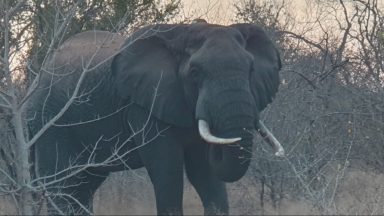This wildfire has been started by poachers in a very calculated move. The poachers have been canny, choosing an area at the edge of the park, away from the usual route taken by the rangers in a plan to draw the game away out of range of the patrol. The plan is no doubt to burn off the grassland in order to encourage a new flush of green growth to spring up after a burn. The new vegetation will be tender and green and very attractive to wildlife, which will draw them toward the waiting poachers.
It takes a week or so for the new growth to appear, and this is when the poachers will return, at night with torches to trap the animals that are attracted to the juicy, young shoots in the burned area.
With a stiff wind, the fire spreads rapidly. Norman English, Counter-Poaching Unit Coordinator for Nyika National Park, is on hand to monitor the situation and to track the fire’s movement. Unfortunately, insects and smaller creatures are extremely vulnerable to bushfires, often jumping to outrun the fires. But some, like this green chameleon, stay very still, unable to move.
Wildfires are usually a vital part of maintaining a balanced ecological system, with managed fires usually an annual event at the end of the dry season when the grasses and brush are at their driest and the slightest spark can set them ablaze. Managed fires are started by farming communities in order to prepare the land for the next growing season in order to increase soil quality, and grazing cattle benefit from the green grass flush after the fire. In many cases, like this one in Nyika National Park, the fire will eventually burnt out without intervention from the team, though the anti-poaching team will be monitoring the area over the coming weeks to try to trap the poachers.

